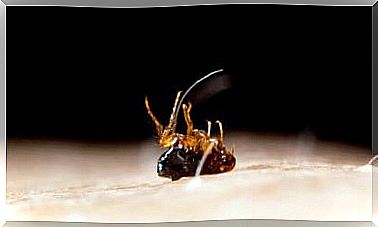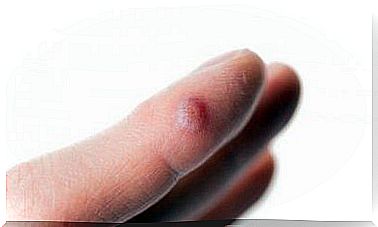What Is Learned Helplessness?
When faced with unpleasant situations, the most normal and healthy thing is to respond by allowing the circumstances to improve. However, some people remain passive and resigned because they think they have no control over the events of life.

Learned helplessness is a reaction of passivity and submission to generally unpleasant situations. Therefore, people who suffer from it do not try to eradicate unpleasant stimuli.
Usually, the condition presents itself after a traumatic experience in which unsuccessful steps have been taken to avoid suffering. Thus, the person understands that there is nothing useful that he can do to end painful situations.
Learned helplessness: definition
According to the American Psychological Association (APA), learned helplessness is a phenomenon that results from repeated exposure to stressful factors. These become out of control and cause people not to use the options available within them to control the facts.
As a result, they integrate that they lack control over what they experience, or over environmental processes. In the medium term, learning destroys the motivation to implement changes.
In other words, it is a psychological condition that leads to the inability to react to situations that produce suffering. This is the consequence of performing failed actions in the face of unpleasant events in the past. Therefore, the person learns to accept suffering and to believe that there is nothing that he can do to avoid unpleasant events.

The causes of learned helplessness
All the causes of learned helplessness are related to some mistake that leads people to think that they have no control over the events in their life. This contributes to a lack of analysis of the possible consequences of certain situations. They believe that their destiny is already defined and that there is nothing they can do to change it. So here are the most common causes of this condition.
Traumatic experiences in childhood
One of the factors that determine the development of this psychological state is the experience of the first years of life. If the person experienced traumatic situations during their childhood, and did not receive any type of support or positive response, it is likely that in adulthood they will develop a submissive posture in the face of similar circumstances.
Education
The education received during childhood is another determining factor in the development of learned helplessness. If the social roles of passivity and dependency are encouraged in certain situations, then vulnerability to future helplessness increases.
On the other hand, messages received during childhood play an important role in establishing inaction. For example, if a child is surrounded by people who keep telling them that they can’t or that they don’t know, it can have a huge impact on their adult life.
An excessively controlled household
There are overly controlled outbreaks. Children who live in an environment where everything that happens around them is in control, where they are deprived of experiencing and learning about the consequences of their actions, are more vulnerable.
Feelings of guilt
On the other hand, there are internal factors, such as responsibility or guilt, that influence the development of learned helplessness. In other words, the person feels guilty about the unpleasant event and begins to believe that he is unable to change or stop any situation that may arise in the future.
We thus fall into the resignation and justification of attitudes that have negative effects on self-esteem and dignity. It may be related to the type of upbringing that heightened the feeling of guilt.
Consequences of learned helplessness
Learned helplessness has a negative effect on the following dimensions:
- Motivation: The belief of a lack of control generates a decrease in motivation. Thus, attempts to respond to new situations are becoming rarer.
- Cognition: It is difficult to learn new patterns of responses that lead to positive results. In addition, any problem can be seen as normal.
- Emotional: It is common for negative emotional states to take place, such as depression, anxiety, and frustration. There is also a marked lack of self-esteem. This state lasts until the person is able to control the circumstances.
- Physical: Bodily ailments include eating disorders as well as changes in the immune system.
Treatments for learned impotence
The best way to treat this phenomenon is through therapeutic intervention. This approach aims to teach the person how to react to a specific situation. According to Vazquez Valverde and Polaino Lorente, the therapeutic approach consists of the following:
- Change the negative attributes that the subject makes of situations: through the performance of simple tasks that offer positive results once the person has performed such and such an action. It is also possible to teach her that the failures are not due to herself.
- Integration of positive feelings: with the aim of strengthening self-esteem. The individual will then be more able to intervene in the future.
On the other hand, therapeutic intervention can aim at approaching traumatic events of the past. The idea is that the patient can overcome his experiences by giving them a different meaning. He will thus develop more functional and positive reactions in future situations.

An acquired problem
As its name indicates so well, learned helplessness is acquired, it is not innate. It is usually established since childhood. This condition causes a series of negative effects that adversely affect the well-being of the person, sometimes in a severe way. It is therefore important that this condition is treated.
The best treatment is psychological therapy. Thanks to it, the person will be able to discover that he can be the master of his life. Once she realizes this, she will experience positive changes on all levels: emotional, physical and cognitive.









